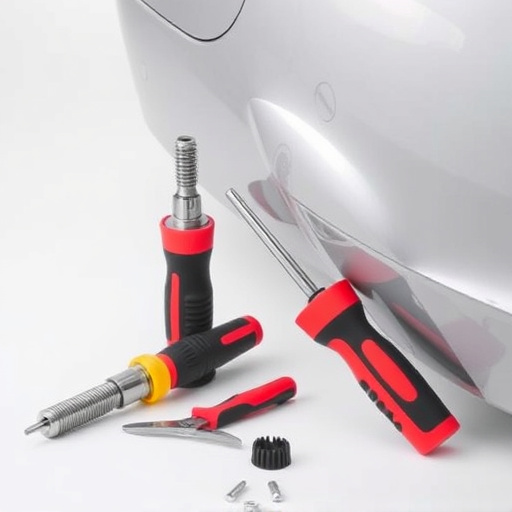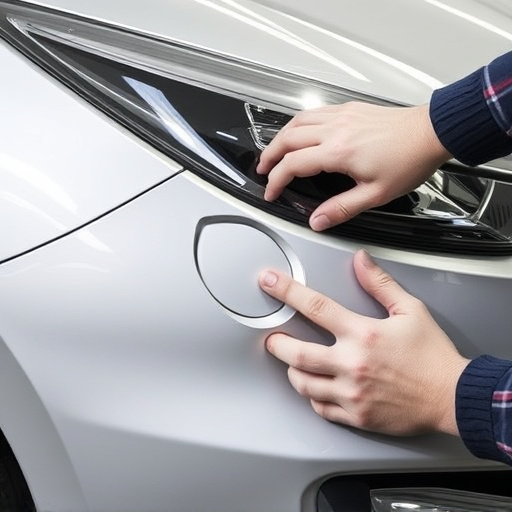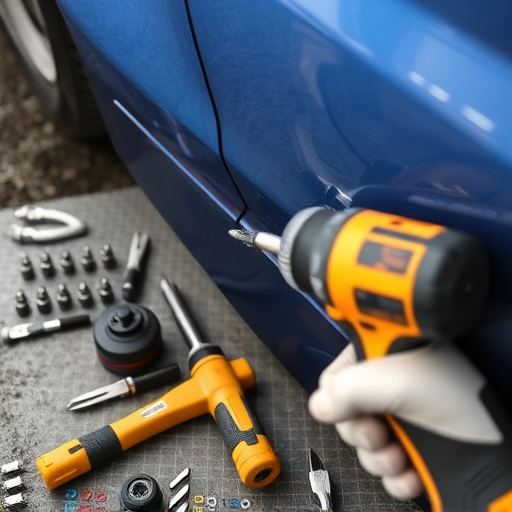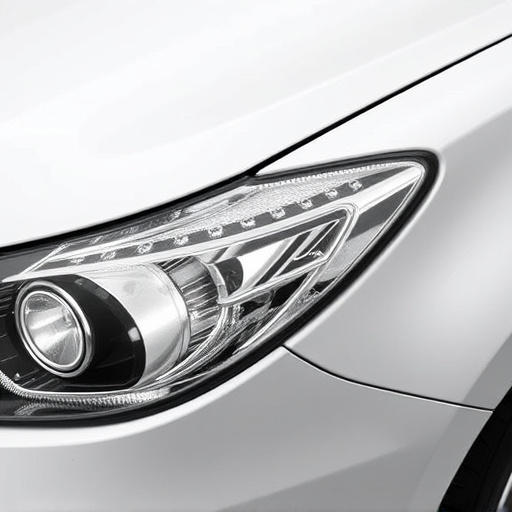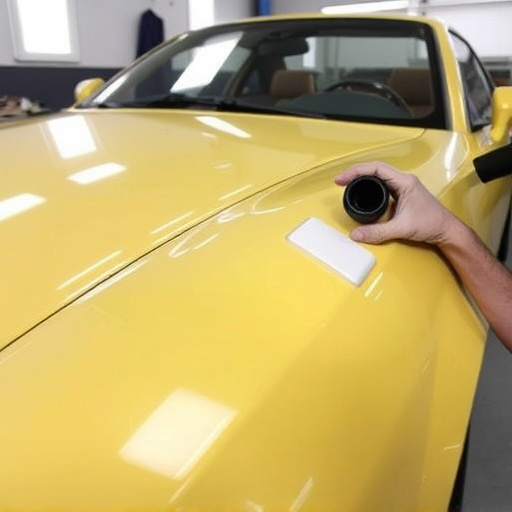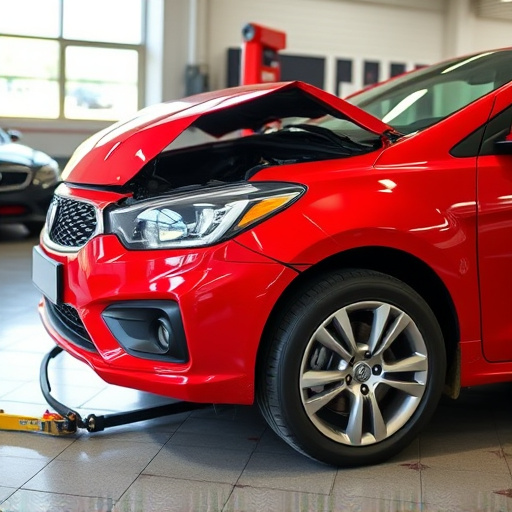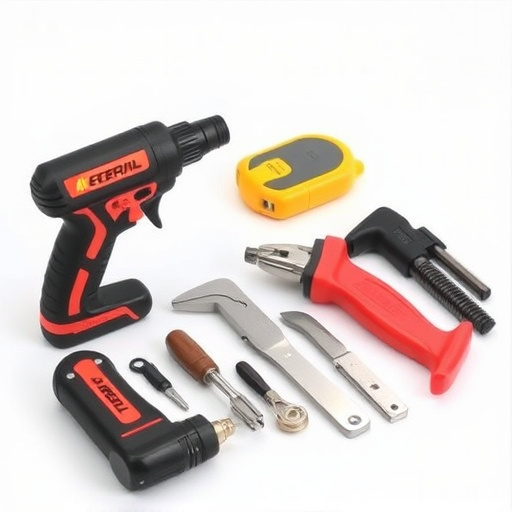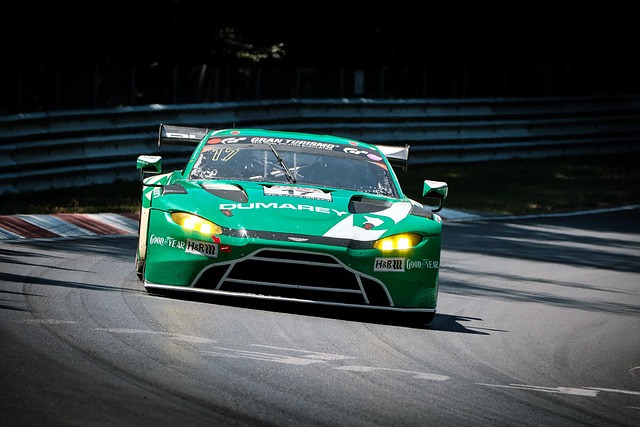Tesla's undercarriage protection system uses undershields, skid plates, and advanced materials to safeguard critical powertrain components below the chassis from road hazards. This proactive design enhances durability, minimizes damage, improves performance, and reduces repair costs. Future advancements in materials science and smart sensors will further improve Tesla undercarriage protection, benefiting owners with enhanced driving experiences.
Tesla vehicles, known for their cutting-edge technology, require specialized Tesla undercarriage protection to safeguard their innovative powertrain components. This article delves into the essential concept of underbody shielding, exploring its role in preserving these critical systems from road debris and potential damage. We examine key components, benefits, and future trends shaping the landscape of Tesla powertrain safeguarding, ensuring folks have the knowledge to make informed decisions for their electric vehicles.
- Understanding Tesla Undercarriage Protection
- Key Components of Effective Underbody Shielding
- Benefits and Future Trends in Tesla Powertrain Safeguarding
Understanding Tesla Undercarriage Protection
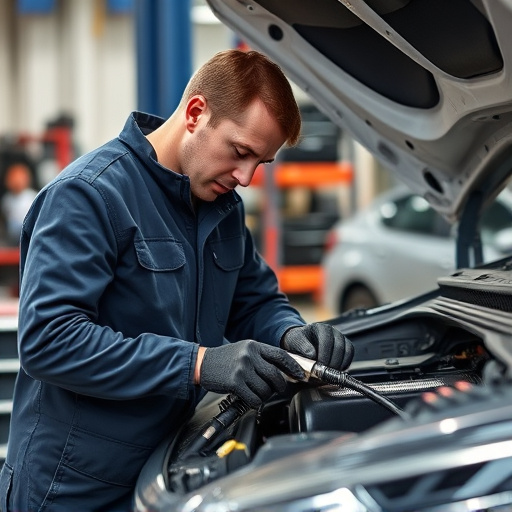
Tesla undercarriage protection refers to a series of measures designed to safeguard the intricate powertrain components beneath the vehicle’s chassis. This protective system is crucial in mitigating the impact of road debris, potholes, and other potential hazards that could cause significant damage to the expensive electric motor, battery pack, and related systems. By understanding Tesla undercarriage protection, owners can better appreciate the advanced engineering that goes into these vehicles and the necessary maintenance practices to keep them running smoothly.
One way this protection is achieved is through the strategic placement of undershields, skid plates, and other specialized components that absorb and deflect impact energy away from the sensitive areas of the powertrain. This proactive approach to defense not only extends the lifespan of Tesla’s high-performance electric drivetrains but also reduces the need for costly repairs, similar to what one might encounter in a Mercedes Benz collision repair scenario. Moreover, regular checks and maintenance, including thorough underbody inspections at trusted auto repair shops, are essential in ensuring these protective measures remain effective, enhancing the overall reliability and safety of the vehicle, and even preserving the pristine condition of its exterior, should any paint services be required down the line.
Key Components of Effective Underbody Shielding
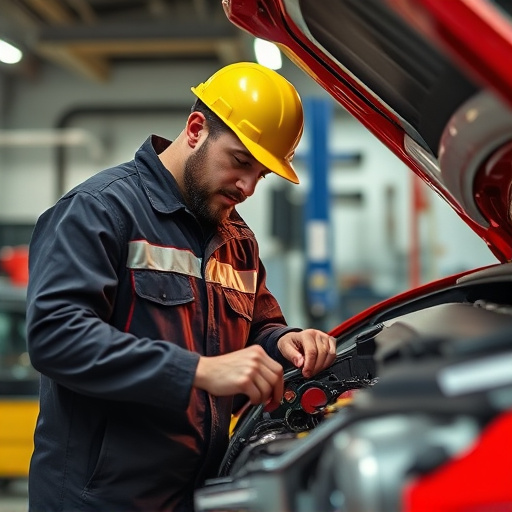
The key components of effective Tesla undercarriage protection encompass robust shielding and advanced materials designed to safeguard critical powertrain components. These include high-strength metal plates or composite panels strategically placed beneath the vehicle’s chassis, absorbing and deflecting impact energy from road debris, curbs, or other obstacles. This shield acts as a crucial barrier, preventing damage to vital parts like engines, transmissions, and fuel systems—all essential for optimal vehicle performance and range.
Additionally, Tesla undercarriage protection incorporates sophisticated engineering to enhance the durability and longevity of these components. The shielding is designed to manage varying impact forces, ensuring minimal penetration or disruption from external objects. This proactive approach not only reduces the need for frequent auto repair near me or visits to a collision center but also maintains the vehicle’s overall efficiency and minimizes potential automotive repair costs associated with undercarriage damage.
Benefits and Future Trends in Tesla Powertrain Safeguarding
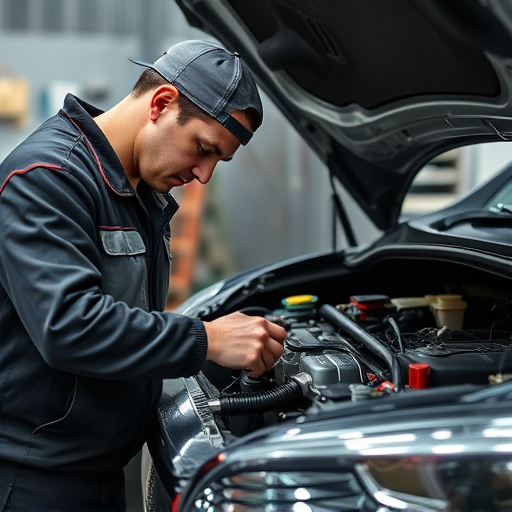
Tesla undercarriage protection is a critical aspect of safeguarding the sophisticated powertrain components that are integral to the company’s electric vehicles. This type of protection offers multiple benefits, including enhanced durability, reduced risk of damage during accidents, and improved overall vehicle performance. By shielding the underbody from debris, road hazards, and potential collisions, Tesla undercarriage guards play a vital role in minimizing costly automotive collision repair and car damage repair expenses, thereby extending the lifespan of the vehicle’s essential systems.
Looking ahead, future trends in Tesla powertrain safeguarding suggest an even greater emphasis on proactive protection. Advanced materials science will likely lead to lighter and more durable underbody shields that seamlessly integrate with vehicle design aesthetics. Additionally, smart sensor technology could enable real-time monitoring of potential threats, allowing for preemptive measures to prevent damage. As the electric vehicle market continues to grow, these innovations in Tesla undercarriage protection will contribute to more efficient and cost-effective automotive collision repair processes, ultimately enhancing the overall driving experience for Tesla owners.
Tesla undercarriage protection is no longer a niche concern but a critical aspect of vehicle design, especially with the increasing emphasis on electric powertrains. By safeguarding the intricate components beneath the car, manufacturers can enhance safety, improve efficiency, and ensure the longevity of these advanced systems. As technology evolves, we can expect to see more innovative solutions in underbody shielding, further protecting Tesla’s powertrain components and securing a safer, more sustainable future for electric mobility.
